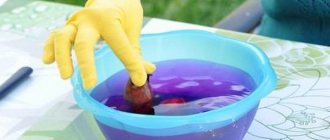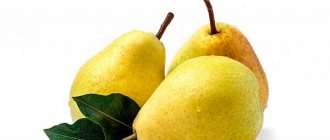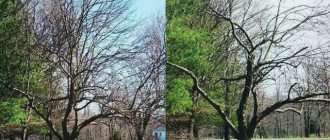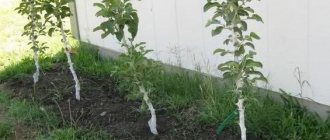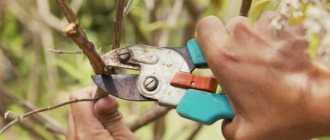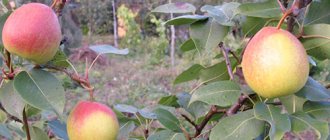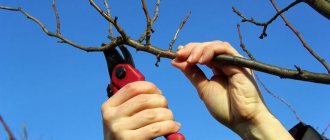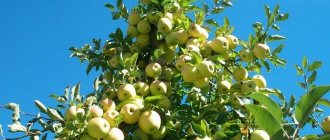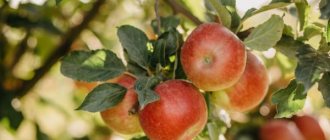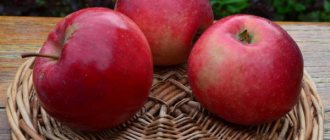Home Diseases and pests
Plum diseases spread quickly throughout the garden. If plum diseases are not treated promptly, the consequences can be extremely destructive. The fact is that this garden crop is affected by all those pathogens that successfully parasitize other stone fruit crops (cherry, sweet cherry, apricot, peach, etc.). Therefore, we suggest that you learn about plum diseases and how to combat them in advance, so that during the season you can carry out effective observations of the condition of the trees. If signs of plum disease appear and control of them is necessary, then this knowledge will help to correctly apply all chemical means of effective protection against fungal, bacterial and viral infections. Read about how to treat and timely protect this fruit crop in your garden. See the illustrations that are presented in large numbers on the page and demonstrate the characteristic signs of diseases.
- 2 Disease of the trunk and bark of the plum tree, false tinder fungus
- 3 Protection of plums from diseases caused by tinder fungi
- 4 Diseases of plum ovular spotting: description with photographs
- 5 Diseases of plum leaves
- 6 Scab - a disease of plum fruits and its treatment (with photo)
Gum treatment
Gum bleeding is not an infectious disease, but more often occurs on trees that have been damaged by frost or infected with other diseases. Quite often, gum production is a sign that the soil in your area is acidic or overly moist. Gum discharge is also observed in the areas of novice gardeners who are overzealous with the application of fertilizers.
How to recognize the disease
The first signs of the disease are droplets of translucent gum, also called resin, on the trunk. The harm from gum disease is the loss of aesthetic appearance by plants, as well as the possibility of infection entering through wounds.
Control measures
In case of gum release, this area must be cleaned with a sharp knife and then disinfected with a 1% solution of copper sulfate. For greater reliability, after a few hours, the wound can be rubbed with fresh sorrel leaves and this procedure can be repeated several times. At the end of the treatment, the wound should be covered with ordinary garden varnish.
How to protect your garden from gum disease
In order to prevent the plums that grow on your site from starting to secrete gum, you need to properly care for them, water them moderately and apply normal doses of fertilizers. All wounds that form after sanitary or formative pruning should always be covered with garden varnish.
Parasites
The plum tree has plenty of enemies among insects. Parasitic pests weaken the tree, reduce productivity, and can even destroy it.
Gall mite
These are micro-insects of a purple or pink hue.
Harm. Parasites settle in growths located near fruit buds - in galls. There are 4 hundred mites in one gall. At the end of spring, mites crawl out to feed on the cellular juices of the plant. The damage to a tree by a mite is indicated by ugly reddish growths - they form in the affected areas.
Treatment. As soon as the plum blossoms, it is treated several times with colloidal sulfur. If the damage is widespread, the affected shoots are cut off and burned. Insecticides are effective at the initial stage of mite activity.
To prevent infection, trees are sprayed in a timely manner, whitened, wounds and cracks are covered, and agricultural practices are followed.
Goldentail
This is a small butterfly from the silkworm family. It is often mistaken for a harmless night moth. She has a yellow, almost golden belly and shaggy antennae. The caterpillars are hairy, gray-black, with an orange-red pattern. The length of the caterpillar is 4 cm. The butterfly lays eggs directly on the leaves.
Harm. The harm to the lacewing becomes obvious as soon as the buds bloom - the caterpillars greedily eat them. Voracious pests quickly eat the foliage, causing irreparable damage to it. Tree growth slows down. Left without leaves, the tree may die altogether.
Treatment. Spraying with karbofos solution.
Attracting predatory insects and birds to the garden helps prevent the invasion of golden-bellied butterflies. For example, the tahida fly feeds on larvae. Vigilant inspection after leaf fall is also necessary. Having discovered cocoons on the branches, they are collected by hand. If there are a lot of cocoons, the affected branches are cut off and burned.
Plum moth
The pest is a gray-brown butterfly. She lays eggs in green plums.
Harm. Caterpillars hatching from eggs eat the pulp of plums. Spoiled fruits, darkening, quickly fall off.
Treatment. Preventive spraying with karbofos helps.
To reduce the number of moths, I cultivate the soil to destroy the insect’s nesting sites. All damage is disinfected with manganese and covered with garden varnish.
Aphids on a tree
“Harms” of small, pale green insects harm trees by drinking their juices.
Harm. Aphids, feeding on the juices of the plum, weaken it. The tops of the tree's shoots curl, it grows poorly, and the leaves dry out and fall off. If you turn the leaf over, you can see a colony of aphids on the reverse side.
Treatment. As soon as the growing season begins, the tree is sprayed with aphids. After 2 weeks – re-treatment.
Proper agricultural practices, timely destruction of pests, loosening the soil, removing weeds, etc. help get rid of aphid attacks.
hawthorn
This is a large daytime butterfly with a wingspan of 6.5 cm. It is white and black in color, with black veins on its wings. The caterpillars are furry and have black and orange stripes.
Harm. The pest eats everything except the bark. The plum weakens and dies.
Treatment. Use the full range of possible means. The caterpillars are shaken down, the trees are sprayed with insecticides, and treated in early spring with a solution of urea and copper sulfate (500 g of urea and 100 g of vitriol per 10 liters of water). Plums are sprayed with insecticides before and after flowering. DDT, Metaphos, Thiophos and other drugs are used.
Prevention measures include attracting birds to the site, regularly inspecting trees, and feeding them with mineral and organic fertilizers.
Plum sawfly
An adult insect has membraned wings. It feeds on the juice and pollen of inflorescences. Damage to the tree is caused by larvae - pale green pseudo-caterpillars. Sawflies lay eggs in flower buds.
Harm. The hatched larvae penetrate the fruit and eat the pulp of the ovary. Offspring of the 2nd and 3rd instars eat part of the fruit near the seed. Spoiled plums fall off.
You can see the damage caused by the Plum Sawfly larvae in the following video:
Treatment. Treat with Karbofos 10%, Benzo-phosphate 10% - in places where insects are most concentrated. The first treatment is 2 days before flowering. You can spray with Rogor, Gardon, Tsidial. The second spraying is aimed against the larvae, it is carried out after flowering - the tree is sprayed with Tarzan or Novaktion.
Prevention of sawfly damage involves destroying the larvae by loosening and deep digging of the soil. It is recommended to remove wormy fruits by shaking.
Plum weevil
This beetle is bronze in color with a red-copper sheen. The length of the insect is 3.5-4.5 mm. Covered with thick hairs. The larvae are yellow-white, the head is brown, arched.
Harm. The beetles eat the buds in the spring, then move on to the leaves. Females lay eggs in the pulp of the ovaries. Once born, the larvae eat the plum pulp. The larvae then pupate in mummified fruits, and adult beetles emerge from the soil in the autumn season.
Treatment. Spray with insecticides - Karbofos, Vofatoks and others. The first treatment is before flowering.
Prevention is similar to measures to counteract the plum sawfly - loosening, digging, destroying affected fruits and other agrotechnical measures aimed at destroying pests.
Most plum diseases are treatable, and the earlier the fight is started, the more effective it is. Prevention deserves special attention - many diseases can be prevented thanks to timely spraying and proper agricultural technology.
0
0
Copy link
Plum dwarfism
A more dangerous plum disease is dwarfism.
How to recognize the disease
At the initial stage, the disease can be identified by plum leaves. In an infected plant they grow small, narrow, with jagged edges. Over time, the leaves become thicker and very fragile. If you examine the tops of the shoots of the plant, you can see bunches of such leaves.
Peduncles also suffer from the disease; they become severely deformed, and if the disease develops seriously, they do not appear at all.
If the disease is not treated, the plants greatly slow down their growth and eventually die.
Control measures
Unfortunately, dwarfism is a viral disease, and it is extremely difficult to cure. Therefore, if you notice signs of this disease on a tree, then it needs to be uprooted as quickly as possible and burned outside the site.
How to protect a plum from dwarfism
To minimize the risk of this disease, you should use only clean cutting garden tools and destroy sucking pests in a timely manner.
Plum disease black nodule and its treatment (with photo)
We propose to consider this plum disease and its treatment in detail, since it is very common.
The causative agent of black knot is the fungus Plowrightia morbosa (Schw.) Sacc. Young and older shoots thicken, spindle-shaped soft greenish swellings appear, which gradually harden and crack. The developing mycelium gives them a velvety black color. The growths increase, which causes deformation of the affected branches, and the development of mycelium leads to the death of the wood and drying out of the branches. The infection persists in the wood of the affected branches. The disease often occurs on apricot.
Look at the typical signs of this plum disease in the photo where they are illustrated:
Control measures. Timely pruning and burning of branches with black knots, disinfecting the cuts with 1% copper sulfate and covering them with oil paint. Preventive spraying of trees in the spring when buds are breaking with Bordeaux mixture or its substitutes (HOM, Abiga-Peak).
Plum pockets
This disease affects fruits. If the infection is significant, more than half of the entire plum crop may be damaged.
How to recognize the disease
The first signs of the disease can be noticed when the fruits become baggy and their fleshy part grows greatly. Diseased fruits do not form seeds, become very elongated and lose their taste.
Observant gardeners identify this disease by the whitish waxy coating that appears on the fruit. This sign precedes the massive fall of plums.
Approximately 15-17 days after the end of flowering, you should carefully examine the trees in the garden.
Plum pockets are a fungal disease that spreads widely in years with high air humidity and low above-zero temperatures during the flowering period.
Control measures
Treatment of plants with 3% Bordeaux mixture in early spring (before buds open) or during their swelling will help overcome the disease. Additional processing can be carried out immediately after the end of plum blossom, but then the concentration should be 1%. As an alternative, when the first signs of the disease appear, use the drug Horus (3.5 g/10 l of water) - two sprays are carried out with an interval of 15 days.
How to protect plums from “pockets”
If you do not want the disease to appear on your site, always collect and destroy fallen fruits and cut out those branches on which diseased fruits were noticed last year.
Bacterial diseases of plum trees
These diseases occur under the influence not of viruses, but of pathogenic bacteria and microbes. Pathogens can enter plants in different ways - through seedlings, dirty tools, birds or insects.
Root cancer
This disease can affect any garden trees. The cause of the disease is bacteria living in the soil. They can only enter the tree body through damaged roots. That is why when planting seedlings you need to be extremely careful not to damage them.
Root canker pathogens become more active in dry weather. A slightly alkaline environment is most comfortable for them.
The disease is manifested by the appearance of growths on the roots. After this, slow rotting of the roots begins. The tree receives less and less life-giving moisture from the soil and dies
Root cancer is incurable. The tree has to be removed by the roots, and the soil where it grew needs to be watered with an aqueous solution of copper sulfate. A last resort, but there is no cure. All tools that the gardener worked with must be disinfected with a bleach solution.
Bacterial burn
This disease can affect even the strongest trees in the garden. Mature plum trees are also unable to withstand fire blight. As a rule, the disease occurs in spring or autumn. Damp air promotes bacterial burns. Bacteria come to plums exclusively from other diseased plants.
Fire blight affects the entire above-ground part of trees. This is immediately visible: there are cracks in the bark, and the buds and leaves have turned black. If bacteria attack a plum tree while it is blooming, the entire color turns brown and falls off.
The fight for the tree will be ineffective. Why? It is impossible to save such a plum. It is removed from the garden along with the roots, and the soil is disinfected with an aqueous solution of copper sulfate.
To prevent the disease, plums are treated with antibiotics.
Clusterosporiasis
A fungal disease, the causative agent of which overwinters in wounds on shoots or buds.
How to recognize the disease
Signs of clasterosporiasis appear on plum leaves in the form of oval gray-brown spots with a crimson border. The spots reach a diameter of 4-5 mm. After about 8-10 days, they dry out, their contents spill out, and through holes remain on the sheet. If there are a lot of such spots, the leaves will dry out and fall off prematurely.
Quite often, the disease also appears on fruits, but there the spots are slightly depressed and also small, but over time they increase to 5-6 mm and become like warts, from which droplets of gum are released. Diseased fruits stop growing and dry out.
With very strong development, the disease takes over entire branches. Round spots appear on them, which then become elongated, and gum oozes from them. If the disease is not treated, the affected shoots will begin to die, resulting in the death of the entire tree.
Control measures
To combat clasterosporiasis, 1% Bordeaux mixture is usually used; plants are sprayed with it at the very beginning of bud break and during the appearance of buds. The next spraying is carried out with the same preparation after flowering. The trees are treated for the fourth time two weeks after flowering and the last time about three weeks before harvesting the fruits.
If the infection is very strong (shoots are affected), then additional treatment can be carried out after the foliage has fallen, but in this case you need to use 3% Bordeaux mixture. In the spring, before and after flowering, the following drugs are also used: Plantenol (3 ml per 10 liters of water), Skor, HOM, Horus.
How to protect your garden from clasterosporiasis
Preventive measures include cleaning and burning fallen leaves and fruits, as well as digging up the soil in the tree trunk area. All affected shoots must be removed, and the wounds must be isolated with garden varnish, having previously cleaned them and treated them with copper sulfate.
Prevention of diseases and damage by pests
Diseases and pests greatly harm the plant, reduce the number of healthy fruits, leave immunity and can even cause the death of the tree. Therefore, it is necessary to prevent their occurrence in advance. For this purpose, prevention is carried out. For this purpose, they resort to the help of chemicals, as well as special agricultural techniques.
- In early spring, cut and get rid of diseased shoots. Cover cracks caused by frost with garden varnish. Dig up the soil in the near-trunk area. Spray with 3% nitrafen.
- During the flowering period, you should not resort to chemicals. You can use a honey solution. To prepare it, mix 30 g of the substance in a bucket of water. Microfertilizers are also allowed: 1 tablet or 1 tbsp. for 10 liters of liquid.
- After the growing season, you will need 0.2% chlorophos, 0.4% vitriol and 0.5% copper with oxychloride.
- At the ripening stage, collect and dispose of the infected connection.
- In the fall, collect weeds and fallen leaves, whiten the trunk, dig up the soil near the plant
- Repeat whitewashing in late autumn.
These procedures must be repeated constantly. If at least one tree shows signs of infection, it is important to immediately take the necessary measures.
Gardeners often lose trees due to various diseases and insects. To avoid such consequences, you need to be careful. Photos of plum diseases and parasites will help beginners identify them in time and get rid of them.
Stone fruit moniliosis (fruit rot)
A fairly dangerous and widespread disease, the causative fungus of which overwinters on fruits and shoots.
How to recognize the disease
It is easy to notice the presence of moniliosis on plum trees - branches or individual shoots become brown, wither and look as if they are burnt. The shoots that are damaged are usually the first to suffer. Subsequently, small gray growths appear on the bark.
At the second stage, this disease affects the fruit: a rotting spot appears on their surface, which gradually spreads to the entire fruit. Pillows of fungal spores soon appear on the spot, infecting everything around. Fruits affected by moniliosis quickly rot, and small gray growths appear on the skin. Then the fruits fall off and the shoots dry out. Severe development of the disease can lead to the death of the entire tree.
Control measures
You can fight the disease with the help of 1% copper or iron sulfate, 1% Bordeaux mixture, as well as the drug Abiga-Peak (40-50 g per 10 liters of water). Treatments should be carried out before flowering and immediately after it.
Affected fruits should be collected and destroyed, after which the trees should be treated with 1% Bordeaux mixture.
How to protect your garden from moniliosis
Preventive measures include collecting and burning fallen leaves, fruits, shoots, pest control, repairing wounds and other damage, and whitewashing trunks.
Fungal diseases
Fungal infection is easily and quickly transmitted from one tree to another. Favorable conditions for the development of fungi are high air humidity and excessive density of the tree crown. Most often, fungal diseases on plums occur in rainy summers. They have to be controlled using fungicides.
Coccomycosis
This disease mainly affects the leaves of plum trees. Only sometimes does this type of fungus infect fruits and shoots. Coccomycosis affects plums with reduced immunity, that is, those that have been poorly cared for. The disease usually occurs in July.
With coccomycosis, small reddish-brown spots appear on the leaves. True, sometimes they are purple-violet in color. In the absence of protective actions, these spots increase and merge into single large spots.
At the same time, a white fluff with a pinkish tint forms on the underside of the affected leaves. Then the affected leaves turn yellow and fall off. Even worse, when coccomycosis occurs, fruit development stops. They dry out and fall to the ground.
Treatment must be carried out immediately. Prevention against coccomycosis is digging up the ground under plums, removing carrion and leaves, and timely fertilizing the soil.
It is possible to rid plums of the disease using a 1% solution of Bordeaux mixture or an aqueous solution of the same concentration of copper oxychloride.
Rust
This fungal disease also affects plum leaves. Under the influence of rust, trees lose their immunity and can no longer withstand winter frosts with their former fortitude. As a rule, plums affected by rust cannot survive the winter and die.
Most often, fungi get on plums from the grass of anemones (anemone). Fungal spores overwinter in its rhizomes.
Initially, the disease manifests itself by the appearance of brown (rusty) spots on the upper side of the leaves. If no protective measures are taken at this time, then soon spore-bearing bulges will form in place of the spots. Such leaves fall off, and the spores located inside the protuberances remain to overwinter on them. That is why, after leaf fall, all fallen leaves in the garden must be removed and burned.
Rust on plums is treated with 1% solutions of Bordeaux mixture or copper sulfate.
Brown spot
The correct name for this disease is gnomoniasis. This type of fungal disease affects not only plums, but also cherries, as well as any other fruit trees or plants in the garden. Without timely treatment, the disease causes the death of half the crop.
Brown spot most often affects weakened plum trees, but in rainy summers it can appear on completely healthy trees. The spores of this fungus spread in their usual way. They are carried by insects, birds, even the wind.
Gnomoniasis can appear on plums as early as spring. Initially, reddish-brown spots with a purple edge appear on the upper side of the leaves. Then black dots appear on both sides of the leaves. These are fungal spores. Then the affected leaves curl into tubes and fall off.
With brown spotting, fruit ripening stops. First they lose their correct shape, then they begin to rot and fall off.
To treat brown spot, use a 1% solution of copper sulfate. Plums are sprayed with it before flowering begins. After flowering ends, repeated spraying with a 1% solution of Bordeaux mixture is required. If two treatments were not enough, then 2-3 weeks before the start of harvest, you can spray the trees again with one of these two products.
Spring and autumn digging of the ground under plums, timely removal of carrion and fallen leaves from the garden are good preventive measures against the appearance of brown spot.
Plum pockets
The causative agent of this disease is vocal fungi. Under their influence, the shape of the fruit changes, they become like bags. Spores of the marsupial fungus overwinter in the bark of trees, sometimes under the scales of the buds.
Most often, plum pockets occur when spring is too long and accompanied by frequent rains.
Spores of marsupial fungi infect flowers and ovaries. At the same time, plums not only lose their natural shape, but also their taste, because the fungus lives directly in the fruits themselves. There are no pits in such plums. It is noteworthy that this type of fungus does not live on other parts of the tree. The disease occurs only once during the season, but can continue as long as there is fruit on the tree.
What should the treatment be? At the beginning of summer, all affected branches should be cut off and burned. When fruits appear, you should carefully inspect the tree and pick off all deformed plums from it. They also need to be destroyed.
In order to prevent disease, plum pockets are sprayed with a 3% aqueous solution of Bordeaux mixture. The first spraying should be done before the buds begin to swell. Then repeat the procedure before flowering begins. The third time you can spray the plums after flowering has completed.
If this disease is not cured, then you will lose up to half the harvest.
Clusterosporiasis
This type of fungus can infect the entire above-ground part of the plum tree. Clasterosporium spores spend the winter in cracks in the bark of trees, as well as in broken branches. Sometimes these pests climb under the membrane of the buds for the winter.
Fungal spores are microscopic in size and therefore easily spread from one tree to another. They are carried by the wind, birds, and insects.
Clusterosporiosis is manifested by the appearance of brown spots with a red border on plum leaves. These are nothing more than colonies of fungal spores. After a short time, holes appear in place of the spots. Because of this, cleasterosporiasis received a second name - perforated spotting.
Similar spots can appear not only on the leaves, but also on the branches of plum trees. Under these spots the bark is cracking. Further spread of the fungus always leads to the death of the tree. When fungal spores appear on fruits, their shape first changes, then they dry out and fall off.
A tree affected by clusterosporiosis needs repeated spraying. At the moment the buds begin to swell, such a plum should be sprayed with a 1% solution of Bordeaux mixture. Similar work should be repeated before flowering begins and immediately after its completion. Another spraying with the same solution should be done two weeks after flowering has completed. The final treatment is carried out 3 weeks before the start of fruit harvesting.
If the damage was severe, then in late autumn, after the end of leaf fall, the plum needs to be treated with a 3% solution of Bordeaux mixture.
To prevent this destructive disease, you need to burn fallen leaves and remove carrion from the garden. You should also dig up the soil under the plums, remove dry branches, and heal wounds.
Moniliosis of stone fruits
Gardeners call this fungal disease gray rot, and botanists call it monilial blight of stone fruits. The causative agent of the disease is the fungus monilia. The spores of this fungus overwinter in fallen fruits and on the branches of plum trees, hiding in cracks in the bark. Stone fruit moniliosis can completely destroy a tree.
Infection with gray mold usually occurs during flowering of plums and sudden changes in ambient temperature. Fungal spores penetrate the plum tree through the pistils of the flowers. This tiny microorganism can spread throughout the entire tree, moving in its sap.
When gray rot appears, the flowers begin to die first, and then the leaves closest to the inflorescences. Next, cracks appear on the branches and a thick substance is released from them.
Young branches of plums become brown and slowly fade. Cracks appear on old branches with this disease. These signs are visible in the photo among other plum diseases.
If some of the fruits survive under the influence of the disease, then they will still inevitably die, since the fungal spores will spread to them. First, small growths appear on fruits affected by gray rot, then the plums begin to rot and fall.
You can get rid of this type of fungus using one percent solutions of copper sulfate, Bordeaux mixture or iron sulfate. Spraying is done only after removing all affected fruits and leaves.
Witch's broom plum
This disease is also called plum bushiness or plum blight. All parts of the plum tree can be affected.
The infection enters through unhealed wounds on the trunk. Insects deliver it there. What does a sick tree look like?
At the site where the fungus appears, rapid growth of thin twigs begins. Their dense accumulation resembles a broom. Around such a broom the leaves begin to get sick and fall off. If the disease is not suppressed, by the end of summer a whitish coating of fungal spores will appear on the leaves. It is clear that the disease will begin to spread throughout the garden.
All branches on which witches' panicles have formed must be cut off and burned, and the entire plum must be sprayed with a 3% solution of Bordeaux mixture. This must be done before the buds begin to swell. After flowering has completed, the diseased plum needs to be sprayed again, but with a 1% solution of Bordeaux mixture.
You can also get rid of plum bushiness using fungicides.
Prevention of this disease is through routine sanitation work. This includes digging up the ground under plums, removing dried branches, removing fallen leaves and carrion, and spring spraying the tree with a 1% solution of Bordeaux mixture.
milky shine
This fungal disease is one of the most dangerous, because under its influence the entire tree dies.
The disease usually affects plums that are frozen in winter. The disease occurs especially often on trees with unhealed wounds.
Milky sheen initially manifests itself as whitish spots on the leaves. This causes the leaves to become brittle and brittle. They dry out quickly and crumble. If fungal spores have chosen the trunk or branches of a plum tree, then multi-colored plates appear at the site of their appearance. They are firmly attached to the bark and can be up to 3 centimeters long.
Unfortunately, this disease is incurable. A diseased plum tree has to be cut down and burned.
If your area has cold winters, then it is worth insulating the plums, and it is better to plant frost-resistant varieties.
Fruit rot
The symptoms of the disease are similar to the description of gray mold. The difference between these two fungal diseases is that fruit rot affects only the fruits of plum trees, and even then only those whose shells are damaged. Fruits are damaged by birds or harmful insects. Therefore, the disease most often occurs during the period of fruit ripening. In our area it is July.
Fruit rot spores intensify their destructive activity in wet weather. Initially, small brown spots appear on the fruits, which soon quickly increase in size. After a short time, these spots cover the entire fruit.
The first thing to do is to pick off all the affected fruits and bury them deeper in the ground outside the garden. After this, wash your hands thoroughly, otherwise, by touching healthy fruits, you will infect them with fruit rot, because spores remain on your hands.
After this, it is worth treating the plum with a 1% solution of Bordeaux mixture
Plum polypore
The spores live exclusively in the bark of trees. Most often, plum trees suffer from this disease. Other stone fruit crops are affected much less frequently by the plum polypore.
Spores appear at the site of sunburn, frostbite, and damage to the bark. The infection is spread by insects. In the place where the spore colony has formed, hard growths appear. At first the surface of the growths is velvety, but later becomes smooth. The color of the growths also changes: from white they gradually become gray and then turn black.
All burns and wounds on the plum must be healed. The growths, of course, should be removed, and the cut areas should be treated with garden pitch or an aqueous solution of copper sulfate. After this, each cut point must be covered with cement-sand mortar.
Sooty fungus
Sooty fungus has a popular name - niello. Spores live on tree leaves. Their presence disrupts the normal course of photosynthesis, and this contributes to a decrease in the tree’s immunity.
Spore carriers are harmful insects. The disease progresses in damp weather with prolonged rains. Initially, a black coating appears on the leaves, which is easily erased. Then the number of affected leaves on the tree increases. The tree is deprived of a sufficient amount of solar ultraviolet radiation and weakens. Then viral or bacterial diseases appear.
Fortunately, getting rid of sooty fungus is not that difficult. First, you need to wipe off the plaque from the leaves. Secondly, the crown needs to be sprayed with a solution of copper sulfate with the addition of laundry soap. In ten liters of water, dissolve 5 grams of copper sulfate and one bar of dark laundry soap.
For prevention, it is necessary to prevent excessive density of the tree crown and regularly destroy harmful insects.
Plum pox (sharqa)
Diseased fruits ripen almost a month earlier and often fall off or dry up right on the tree.
How to recognize the disease
The first signs of smallpox are chlorotic spots on young leaves, similar to rings or winding lines. In my area, I always inspect the leaves against the light - this way the spots are better visible. If the disease is not treated, the leaves become marbling.
Spots, stripes or rings are also quite visible on the fruits. The pulp of such plums becomes dense, brown-red and inedible.
Control measures
This disease is dangerous due to its viral nature, so it is extremely difficult to cure. It is better to completely remove diseased plants from the site.
How to protect the garden from plum pox (sharqi)
To prevent the disease from appearing on your site, use only clean cutting tools, healthy seedlings, and promptly destroy sucking pests that can be carriers of infection.
Viral diseases of plum trees
The sad thing is that infectious and viral diseases of plum trees are practically incurable. Carriers of viruses and diseases are harmful insects and birds.
Plum pox (sharqa)
This disease causes spots and stripes to appear on the leaves, causing the surface of the leaf plate to look like marble. Sharka is common on plums in all climatic zones of the Earth. Most often, sharqi viruses are carried by aphids. Viruses come to it from clover, sweet clover or nightshade. Unfortunately, there are often cases when infection enters the garden along with purchased seedlings.
Plum pox is manifested by the appearance of spots on the fruit. These are colonies of malicious viruses. They feed on the pulp of fruits. In their habitat, dents gradually form. This makes the fruits tasteless; of course, they cannot be eaten. Affected fruits ripen prematurely and fall off. Only a few of them dry out and remain hanging on the branches.
It is impossible to cure a plum from sharka. There is only one way out - destroying the tree.
Plum dwarfism
The viruses of this disease live in the bodies of animals and birds. The infection occurs on plums with harmful insects or from direct contact of an animal with the plum trunk. Also, birds perching on tree branches can bring this virus with them.
Dwarfism initially leads to a noticeable slowdown in the growth of young shoots. Then the leaves begin to decrease in size and become deformed. At the tops of the branches, clusters of affected leaves form, and the formation of new buds stops. The disease progresses inexorably, eventually the tree dies.
It is impossible to cure it. We have to cut down the plum tree, uproot the stump, and burn all the wood.
Plum rust
Observant gardeners begin to monitor the surface of the leaves in mid-summer - it is at this time that the first spots appear on them.
How to recognize the disease
A fungal disease of plums that appears as brown spots located between the veins on the leaves. If the disease is not treated, then dark cushions with fungal spores appear in place of the spots. Severely affected leaves fall off prematurely, and the tree itself weakens and loses its immunity and winter hardiness.
Control measures
1% Bordeaux mixture or any other fungicide (for example, Topaz or Abiga-Peak) will help get rid of rust. The main thing is to carry out processing on time. If spots appear on the plum leaves in my garden, I first treat the trees in mid-summer and then repeat the procedure every two weeks. I finish processing three weeks before the fruit begins to ripen.
How to protect your garden from rust
To prevent the disease, you should always collect and burn fallen leaves, and be sure to dig up the soil in the tree trunk circle.
Now you know how to recognize and treat the most common plum diseases. You can’t let a disease get started - the sooner you take care of it, the better it will be for both the plant and the health of the entire garden. As for viral diseases, no matter how sorry you are for the tree, diseased plants should be immediately removed from the site and it is advisable not to plant stone fruit crops in their place for several years.
Disease of the trunk and bark of the plum tree, false tinder fungus
The causative agent of this disease of the plum tree is the fungus Phellinus igniarius (L.: Fr.) Quel. A plum trunk disease called false fungus causes white heart rot of the wood. Common on plum, cherry, sweet cherry, pear trunks, and on deciduous forest trees. A typical sign of plum bark disease is veins and black lines in the tissue of the affected wood. The fruiting bodies are perennial, hoof-shaped, cushion-shaped, occasionally nodule-shaped, prostrate.
The surface is grayish-black or black-brown, with concentric grooves and usually deep cracks. The edge is blunt, less often pointed. The fabric is woody, very hard, dark brown or rusty brown. The hymenophore is rusty brown, sometimes with a grayish coating, usually located at a right angle to the trunk.
Look at the characteristic signs of plum disease in the photo, which shows the differences between healthy and damaged bark and wood:
The meaning of spots on leaves
From time to time, a gardener can observe the appearance of different shades on the foliage of crops in his area, which also indicate an unhealthy state of the plants.
Leaves turn yellow and dry out
The main cause of plum chlorosis is poor compatibility with the rootstock of grafted trees or poor quality grafting. Also, the condition of the foliage is affected by mechanical disturbance of the roots, insufficient or excessive amount of moisture in the root zone.
Brown spots on plum leaves
The appearance of brown spots on the foliage indicates damage to the garden crop by insects and fungus. This may also be the cause of a lack of microelements important for plant nutrition.
Plum leaves turn black
If plum leaves are noticeably covered with a sticky black coating, often in the company of fruits, this is a sign of an aphid attack on the tree. It weakens the culture and carries with it spores of sooty fungus.
Important! Young seedlings and weakened trees often fall under the influence of the bug.
Aphids attack stone fruit tree
White coating on plum leaves
A white sticky coating on the foliage of a plum tree is a symptom of powdery mildew. The disease causes damage to all parts of the crop and affects the general condition of the garden.
Pale and light leaves
The pallor of the leaves should alert the gardener. After all, this can be a physiological or pathological sign. Most often the reason for this is:
- lack of nutrients;
- insufficient amount of nitrogen in the soil;
- lack of potassium-phosphorus fertilizers;
- lack of potassium, manganese, iron or copper.
Prevention of plum diseases: calendar
Preventive measures to combat diseases include in the schedule of seasonal work in the garden:
- March, April - cut off damaged branches, clean and disinfect cracks in the bark with garden varnish. Before the buds open, the plums are sprayed with a 1% solution of Bordeaux mixture, and with the appearance of greenery - with fungicides. Tree trunk circles are mulched with ash to prevent insects;
- May, June - sprayed with insecticides against gnawing and sucking insects at the beginning of budding and with the appearance of fruit ovaries. To prevent clasterosporiasis, plums are treated with the fungicide Skor at the beginning and end of flowering. During flowering, trees are not sprayed;
- July, August - insecticides and fungicides are used if pests or signs of disease appear;
- September, October - the garden is treated with copper preparations, insecticides and fungicides after the leaves fall.
Autumn spraying is carried out at temperatures above 0 degrees, in dry weather. In frost, the liquid freezes in microcracks in the bark and damages plant tissue. The soil around the tree trunks is also disinfected, since larvae and spores hide in it.
Non-communicable diseases
Non-infectious diseases are a consequence of poor agricultural practices and insufficient care of the plum tree. The most common symptoms observed in plums are drying out and gum formation, otherwise known as gommosis.
Gum treatment
All stone fruits are prone to gum formation. Damage to the trunk and branches “cry” in drops, similar to amber in transparency and color. This is an attempt by the tree to close the wound with resin, but the plum cannot heal the damage on its own. The risk of plum infection by pathogens increases.
Attention!
Gommosis is a condition that often appears due to the carelessness of the gardener when pruning.
With the development of gommosis, the plum suffers:
- the plant lags behind in development;
- gradually depleted;
- may die.
Careful tree care is the basis for preventing gum development. All wounds must be treated. If part of the tree is severely damaged, it must be cut off.
Drying out
The disease leads to the death of the plum. The reason is the gardener’s negligence and deviation from agricultural technology. Factors leading to drying out are:
- surface roots freeze out in the winter season;
- excessive pruning in autumn;
- highly alkaline or acidified soil, saline soil.
The tree can dry out within a month, as it reacts painfully to freezing, soaking and gumming.
How to protect plums from diseases and parasites
The best way to deal with diseases and pests of plums is to regularly do preventive work.
Seasonal treatments
Plum trees need to be treated regularly as a preventative measure. The first treatment is carried out in early spring, when the buds begin to bloom. The plum is sprayed with Bordeaux mixture. After 14 days, the procedure is repeated.
Repeated preventive treatments are carried out in the summer to protect the future harvest from pests. It is necessary to carry them out if cobwebs, spots or gnawed leaves appear on the tree.
In autumn, treatments are carried out after harvesting. They are made to prevent insect larvae from crawling out of the soil in the spring. The tree trunk circle is dug up to a depth of 15 cm and fertilizers are applied.
We follow the rules of agricultural technology
For planting, you need to use healthy seedlings. It is not recommended to plant them too close together. During pruning, only sharply sharpened instruments are used, which must be disinfected before processing and after each cut. Every autumn the leaves are raked and burned. Then they dig up the soil. After digging, rotted manure is added to the soil. During the growing season, it is important not to forget about applying mineral and organic fertilizers.
Preventative treatment
Preventive measures include:
- collecting and destroying the remains of the affected plum tree, as well as fruits both fallen off and remaining on the tree;
- pruning and burning affected shoots and fruits;
- digging up soil in a circle around the trunk in early spring;
- treatment of cracks in the bark;
- removing weeds from garden plots;
- processing the crop using Bordeaux mixture or a solution of copper sulfate and soap.
Affected plums need to be sprayed at least three times a year: in the fall - after cleaning the garden, in early spring - until the buds open and after flowering has finished.
The care and attentiveness of the owner, as well as timely treatment, is the best way to protect the health of the garden and reap a rich harvest.
Stone fruit scab
The causative agent of scab is the fungus Cladosporium. It harms stone fruits in the same way as most other fungi: it appears as an olive-colored spot that gradually grows and turns black.
Stone fruit scab is widespread in the southern regions. Winter thaws and late spring frosts, frequent rains in May at a temperature of +25 degrees are favorable for it. It spreads quickly on plants planted in lowlands, on heavy, clay soils, and unventilated areas.
Heat, drought and good ventilation stop the development of the fungus.
Andrey Vasiliev Consultant of the “Orchard” section
Sometimes the weather just helps - dry heat comes and the mushrooms are finished.
To prevent scab, spraying with preparations containing copper is used, plus specialized spraying against scab (twice with systemic fungicides, with an interval of two weeks).
